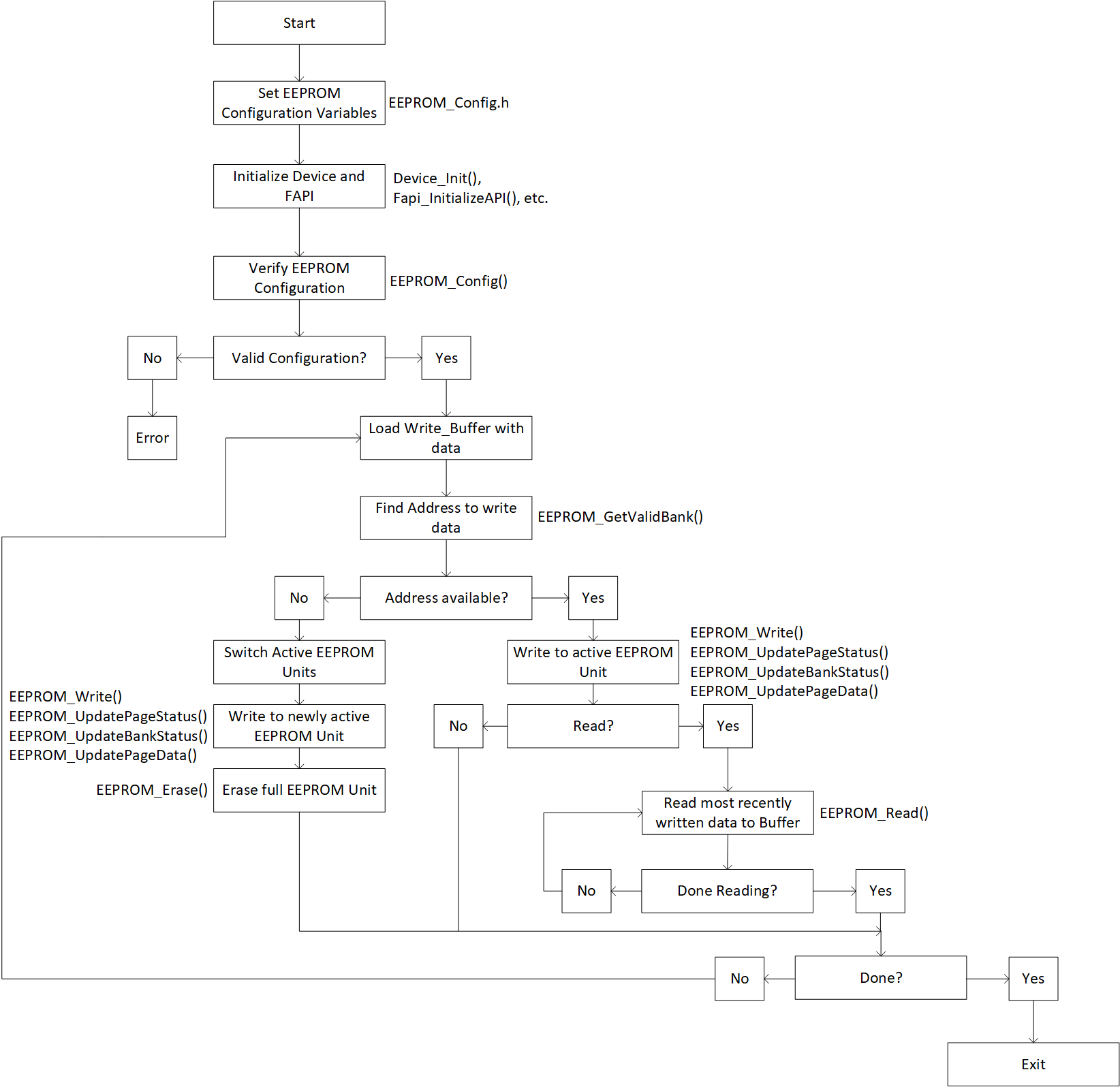SPRADE8A November 2023 – April 2024 F29H850TU , F29H859TU-Q1 , TMS320F28P650DH , TMS320F28P650DK , TMS320F28P650SH , TMS320F28P650SK , TMS320F28P659DH-Q1 , TMS320F28P659DK-Q1 , TMS320F28P659SH-Q1
- 1
- Abstract
- Trademarks
- 1 Introduction
- 2 Difference Between EEPROM and On-Chip Flash
- 3 Overview
- 4 Software Description
-
5 Ping-Pong Emulation
- 5.1 User-Configuration
- 5.2
EEPROM Functions
- 5.2.1 EEPROM_Config_Check
- 5.2.2 Configure_Protection_Masks
- 5.2.3 EEPROM_Write
- 5.2.4 EEPROM_Read
- 5.2.5 EEPROM_Erase
- 5.2.6 EEPROM_GetValidBank
- 5.2.7 EEPROM_UpdateBankStatus
- 5.2.8 EEPROM_UpdatePageStatus
- 5.2.9 EEPROM_UpdatePageData
- 5.2.10 EEPROM_Get_64_Bit_Data_Address
- 5.2.11 EEPROM_Program_64_Bits
- 5.2.12 EEPROM_CheckStatus
- 5.2.13 ClearFSMStatus
- 5.3 Testing Example
-
6 Single-Unit Emulation
- 6.1 User-Configuration
- 6.2
EEPROM Functions
- 6.2.1 EEPROM_Config_Check
- 6.2.2 Configure_Protection_Masks
- 6.2.3 EEPROM_Write
- 6.2.4 EEPROM_Read
- 6.2.5 EEPROM_Erase
- 6.2.6 EEPROM_GetValidBank
- 6.2.7 EEPROM_Get_64_Bit_Data_Address
- 6.2.8 EEPROM_UpdateBankStatus
- 6.2.9 EEPROM_UpdatePageStatus
- 6.2.10 EEPROM_UpdatePageData
- 6.2.11 EEPROM_Get_64_Bit_Data_Address
- 6.2.12 EEPROM_Program_64_Bits
- 6.2.13 EEPROM_CheckStatus
- 6.2.14 ClearFSMStatus
- 6.3 Testing Example
- 7 Application Integration
- 8 Adapting to Other Gen 3 C2000 MCUs
- 9 Flash API
- 10Source File Listing
- 11Troubleshooting
- 12Conclusion
- 13References
- 14Revision History
4.1 Software Functionality and Flow
The device must first go through its initialization code to initialize clocks, peripherals, and so forth. The initialization functions used are the functions provided with the header library files included in the project. Further information regarding this sequence can be read in the documentation provided with the header files.
Once this is complete, the Flash API initialization and parameters are set to prepare for Flash programming. The Flash API library requires a few files and certain initialization/setup to function properly. The complete list of required steps can be found in the F28P65x Flash API Reference Guide.
Next, the EEPROM Configuration specified by the user in EEPROM_Config.h will be checked for validity and certain variables used by the Flash API will be configured. More details can be found in User-Configuration and Section 5.2.1.
At this point, programming can begin. First, data needs to be captured to program. After programming this data, the read functionality reads the last set of data that was programmed into the Flash. This software flow should be followed by most applications, especially the initialization portion as some Flash API functions need to be copied to internal RAM before programming can begin.
The example project provided follows this software flow shown in Software Flow. To learn more about the functions shown in the diagram, navigate to their appropriate section in the document.
 Figure 4-1 Software Flow
Figure 4-1 Software Flow